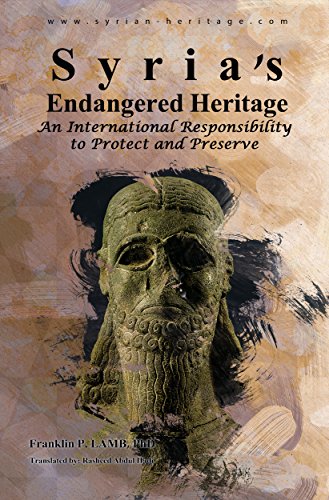Aleppo's surviving remains include medieval gates, 6th century Christian structures, Roman period street layouts, Ayyubid and Mamluk mosques and schools, and many Ottoman period homes and palaces. One of the most well-known cultural sites in Aleppo is the Great Mosque, which was founded in the Umayyad period in the 12th century with a mamluk minaret dated to AD 1090. Next to the Umayyad Mosque is a Byzantine cathedral that later became the al Halawyah Madrassa--a Koranic school.
The Umayyad's were the second of the four major caliphates established after the death of Muhammad and at one point included 30% of the World's population. Damascus was its capitol and an estimated 80% of Sunni Muslims; claim to be supporters of the Umayyads, known to be largely secular. The Christian and Jewish population had autonomy under the Umayyads and their judicial matters were dealt with in accordance with their own laws and by their own religious heads or their appointees, although they did pay a poll tax for policing to the central state. Muhammad had stated explicitly during his lifetime that Abrahamic religious groups (still a majority in times of the Umayyad Caliphate), should be allowed to practice their own religion. This secularism and religious tolerance has until recently, been a cherished hallmark of Syrian society.
As a result of four years of aerial bombardments and shelling, in addition to countless jihadist iconoclastic orgies of destruction, illegal excavations and lootings of our shared cultural heritage in the Old City of Aleppo has sustained more damage to her archeological sites than just about any area in Syria. And there is an urgent need to start repairs.
More than 150 heritage buildings are seriously damaged just within the ancient souk, where this observer and his son Alistair Xavier were first given a tour by the Syrian army back in 2013. At that time an estimated two hundred and fifty archaeological buildings in the Old City of Aleppo were estimated to need rehabilitation, with 30 percent have been destroyed, 30% severely damaged and 40% sustaining minor damage. Today, the damage is much greater with more than 60 percent of the souks now destroyed. Many of the traditional houses, dating from around the first century AD, are also damaged and in need or urgent repair. Lack of building materials and cash our two major problems.
Much assessment of damage has already been achieved and even some inchoate repairs have been started. According to Dr. Maamoun Abdul-Karim, Director-General of Antiquities and Museums (DGAM), "We've asked the mayor not to move any of the old stones. We have a team there gathering information about the damage, which they will present to us. We will start working in the most at-risk areas. It's very sad and it's a very dramatic situation, In Palmyra, if we have to wait years for peace to return, or because we don't have funds, we can wait. But in Aleppo every new winter will be a further attack on the cultural sites. A lot of the buildings were built using traditional materials - not like the stones in Palmyra, which can wait three or four years, no problem."
Aleppo is in serious danger and according to DGAM, close to 300 archaeological buildings in the Old City of Aleppo have been documented as needing urgent rehabilitation.
Dr. Maamoun recently commented to this observer among others: "The war will end, the politics will change, but our heritage remains for all of us, for our descendants, and for us to share with the whole world. Syria's patrimony can never be divided between different camps. It's a shared heritage that belongs to everyone. If it is saved, it's a victory for humanity. If it's lost, it's a loss for everyone. We have to work together to save it for our children. We need the Syrian people to come back to Syria, the people of Aleppo to come back to their houses. For real restoration we need peace, we need reconciliation."
Franklin Lamb is reachable c/o fplamb@gmail.com
(Note: You can view every article as one long page if you sign up as an Advocate Member, or higher).






